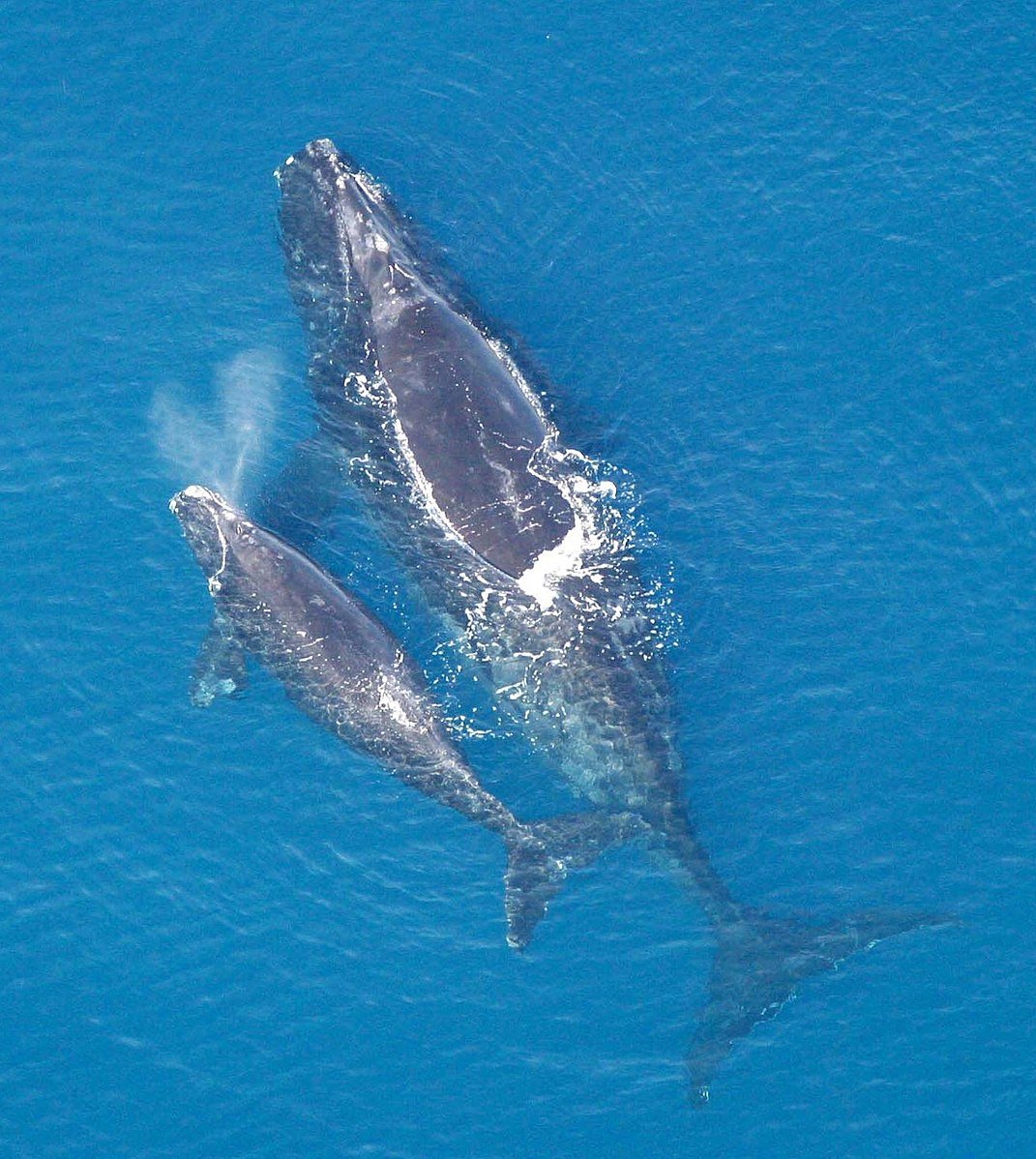The Challenges Facing the North Atlantic Right Whale
In the 11th century, Basque sailors from northern Spain became the first modern whalers, hunting for oil, bone and baleen in the Bay of Biscay. By the16th century, these same whalers traveled across the Atlantic to modern-day Canada, where they targeted a particularly large and slow species that swam near the coast: the North Atlantic right whale. In the 1800s, this whale was killed by the dozens if not hundreds each year as the “right” whale for valuable whale oil. By the time right whale hunting was internationally outlawed in the 1930s, the North Atlantic right whale (Eubalaena glacialis) was on the brink of extinction, with barely 200 individuals remaining.
Reaching 60ft long and weighing nearly a hundred tons, North Atlantic right whales are one of the largest animals in the world, behind only some giant cousins like the blue whale. Long extinct regionally in Europe, modern right whales are now found exclusively up and down the east coast of the United States and Canada. For twenty years – from 1990 to 2010 – right whales saw a brief resurgence, as their population nearly doubled in part due to better monitoring and new mandatory ship speed limits. Yet in recent years this recovery has collapsed, and North Atlantic right whales are once again on the brink of extinction.
On the Brink of Extinction
Since 2017, 31 individual right whales have been killed due to humans: a nearly 10% loss of their total population in only 3 years. Scientists now believe that, should deaths continue at their current rate, the North Atlantic right whale will enter an irreversible decline within next decade. In July, the IUCN placed the whales on its “critically endangered” list, noting that the species was “one step” away from extinction.
The culprit of this decline is the unintentional effects of one industry: lobster fishing.
Lobster fishing is a major economy in Maine and eastern Canada, with thousands of fishermen making their living fishing for the crustacean. Although fishermen don’t intend for lobster fishing to harm whales, the method in which lobsters are caught – which consists several long fishing lines that connect lobster traps on the ocean floor to floating buoys on the surface – poses a danger for right whales, which easily get caught in these lines. Once entangled, right whales are easily injured while trying to escape and can easily drown, as the lines prevent them from reaching the surface to breathe.
Today, almost all modern right whale deaths in the Atlantic can be attributed to entanglement, with a startling 85% of North Atlantic right whales believed to have had at least one encounter with lobster fishing lines. Some 60% having been entangled multiple times.
Injuries and deaths caused by entanglements aren’t the only way lobster fishing is impacting right whales. Stress caused by entanglements can affect the rate in which female right whales birth calves. For example, while right whale females historically birthed a calf every two to three years, now it is closer to every six to 10. In the last birthing season, from 2017-2020, only 12 calves were born, less than a third of the numbers of previous generations. At least two of these calves have since been killed in 2020 alone.
Between entanglement deaths and low birth rates, right whales are likely to vanish from our seas within the next generation.
Conservation Efforts
But there is still time to save this species. In Canada, new rules designed to prevent entanglements, such as season-long fishing closures off the Gulf of St. Lawrence and new fishing gear requirements, will go into effect starting in 2021. In addition, two new “seasonable management” areas will be established where mandatory speed limits for ships will be put into place during seasons where whales are present. As seas grow warmer and whales venture further north to feed, Canada’s conservation efforts are particularly important, especially as most deaths occur in Canadian waters.
But in the United States, conservation efforts have backslid. In 2016, the Northeast Canyons and Seamounts Marine National Monument – a protected marine environment off the coast of New England – was closed in order to protect whales from fishing; this year, the U.S. government decided to resume fishing in this protected area, putting more whales in harm’s way. Efforts to create new protected areas for right whale feeding, as proposed by the Pew Charitable Trust, have likewise failed to gain traction, as they are considered detrimental to the lobster fishing industry in Maine.
As the world enters into an age of mass biodiversity loss caused by human-driven overfishing, deforestation and climate change, the fate of the North Atlantic right whale might serve as a bellwether for how we tackle the biodiversity crisis in the 21st century.
With the right rules, regulations, and conservation efforts this species can still be saved. Or, it might instead go the way of the Tasmanian tiger, Falkland Island wolf, or Western black rhino: species each brought to extinction by human actions.



